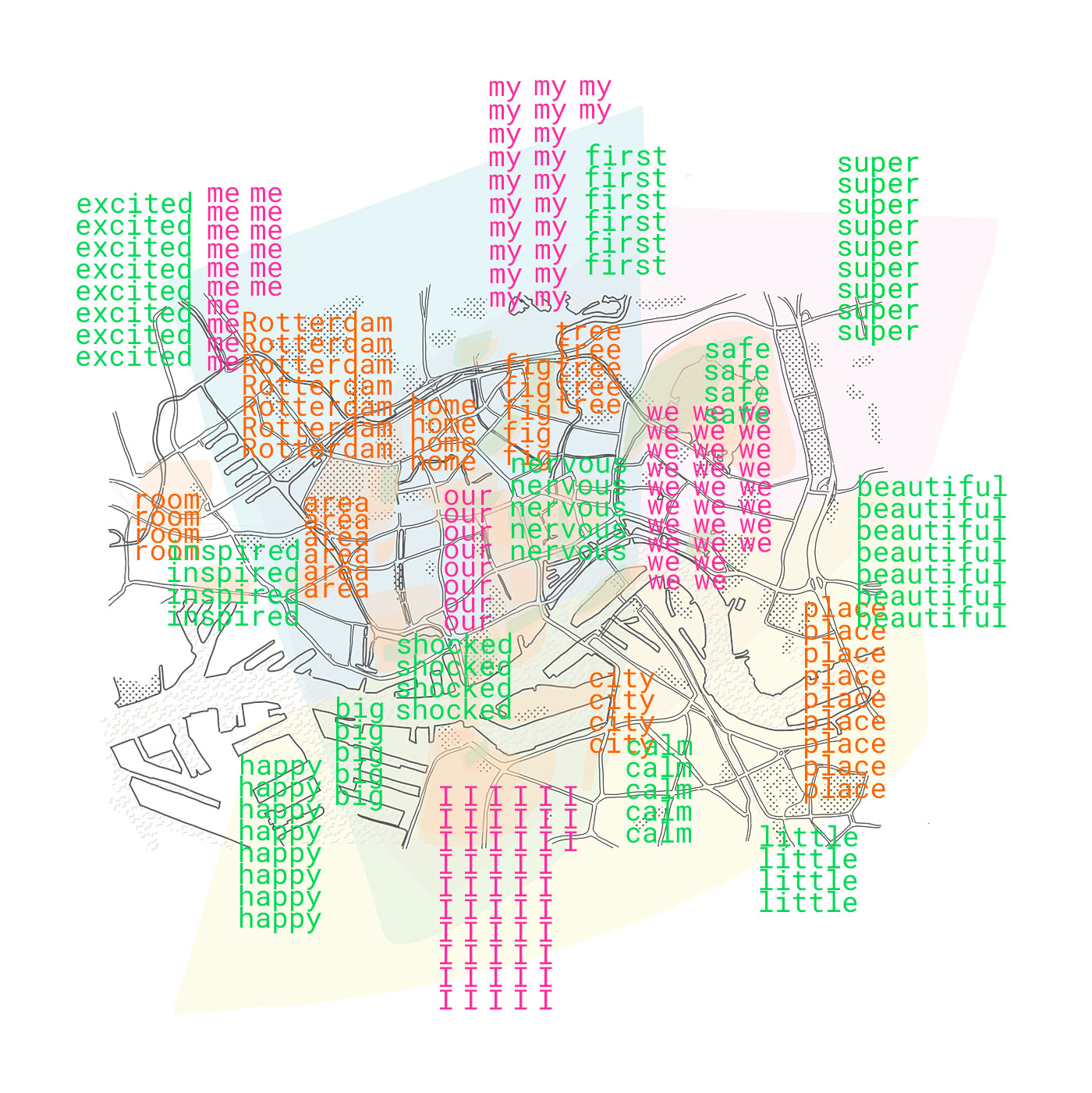Mapping as an artistic tool: Difference between revisions
Jump to navigation
Jump to search
| (4 intermediate revisions by the same user not shown) | |||
| Line 10: | Line 10: | ||
=== <span style="color: white; font-family: Menlo; text-decoration:none; background-color: #ff0033; padding-top: 0.1vw; padding-bottom: 0.1vw; padding-left: 0.1vw; padding-right: 0.2vw;"> _on the subjectivity of maps</span>=== | === <span style="color: white; font-family: Menlo; text-decoration:none; background-color: #ff0033; padding-top: 0.1vw; padding-bottom: 0.1vw; padding-left: 0.1vw; padding-right: 0.2vw;"> _on the subjectivity of maps</span>=== | ||
The notion that maps provide an objective or scientific depiction of the world is a common myth. The graphic nature of maps simplifies reality, giving makers and users a sense of power without social and ecological responsibilities. Details like the colouring of areas or the different sizes in typography can have great political consequences. ''(Pater | The notion that maps provide an objective or scientific depiction of the world is a common myth. The graphic nature of maps simplifies reality, giving makers and users a sense of power without social and ecological responsibilities. Details like the colouring of areas or the different sizes in typography can have great political consequences. ''(Pater, 2016, p.152)'' | ||
=== <span style="color: white; font-family: Menlo; text-decoration:none; background-color: #ff0033; padding-top: 0.1vw; padding-bottom: 0.1vw; padding-left: 0.1vw; padding-right: 0.2vw;"> _artists & maps</span>=== | === <span style="color: white; font-family: Menlo; text-decoration:none; background-color: #ff0033; padding-top: 0.1vw; padding-bottom: 0.1vw; padding-left: 0.1vw; padding-right: 0.2vw;"> _artists & maps</span>=== | ||
| Line 16: | Line 16: | ||
=== <span style="color: white; font-family: Menlo; text-decoration:none; background-color: #ff0033; padding-top: 0.1vw; padding-bottom: 0.1vw; padding-left: 0.1vw; padding-right: 0.2vw;"> _what to map</span>=== | === <span style="color: white; font-family: Menlo; text-decoration:none; background-color: #ff0033; padding-top: 0.1vw; padding-bottom: 0.1vw; padding-left: 0.1vw; padding-right: 0.2vw;"> _what to map</span>=== | ||
== <span style="color: white; font-family: Menlo; text-decoration:none; background-color: #0033ff; padding-top: 0.1vw; padding-bottom: 0.1vw; padding-left: 0.1vw; padding-right: 0.2vw;"> _projects</span>== | == <span style="color: white; font-family: Menlo; text-decoration:none; background-color: #0033ff; padding-top: 0.1vw; padding-bottom: 0.1vw; padding-left: 0.1vw; padding-right: 0.2vw;"> _projects & works</span>== | ||
[[File:Rotterdam impressions map.jpg|thumb|rotterdam impressions map // everything mapped]] | |||
▶ [[mapping sensations]] <br> | ▶ [[mapping sensations]] <br> | ||
▶ [[alternate maps]] <br> | ▶ [[alternate maps]] <br> | ||
▶ [[rotterdam impressions]] <br> | |||
▶ [http://wiki.alnik.me/index.php?title=Mental_health#the_thousand-foot_journey the thousand-foot journey]<br> | ▶ [http://wiki.alnik.me/index.php?title=Mental_health#the_thousand-foot_journey the thousand-foot journey]<br> | ||
Latest revision as of 22:20, 25 January 2024
_context
_thesis & research questions
_on the subjectivity of maps
The notion that maps provide an objective or scientific depiction of the world is a common myth. The graphic nature of maps simplifies reality, giving makers and users a sense of power without social and ecological responsibilities. Details like the colouring of areas or the different sizes in typography can have great political consequences. (Pater, 2016, p.152)
_artists & maps
_what to map
_projects & works
▶ mapping sensations
▶ alternate maps
▶ rotterdam impressions
▶ the thousand-foot journey
_references
★ Kollektiv Orangotango and Transcript (Firm (2019). This is not an atlas : a global collection of counter-cartographies. Bielefeld: Transcript Verlag.
★ Ladenburg, A. (2021). 14 Trees of Rotterdam – a Guide for City Exploration. PrintRoom & Peter Foolen Editions.
★ Pater, R. (2016). Politics of Design : A (Not So) Global Manual for Visual Communication. Amsterdam: Bis Publishers.
